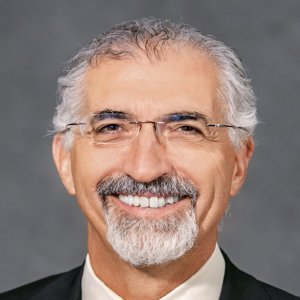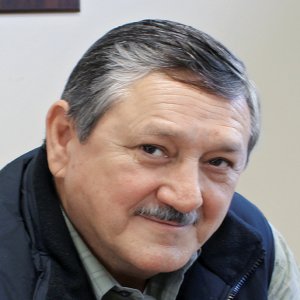Consolidating Assets Under one Umbrella

STORY INLINE POST
Q: How optimistic are you that the recovery seen in 2Q16 will last, and what could this mean for Americas Mining Corporation?
A: We predict that copper prices could rise to around US$2.50/lb during 2016. Earlier in the year, prices were averaging around US$2.14/lb, before rising to US$2.25 following the fallout from the UK’s decision to leave the European Union, and the ongoing weakening of the dollar. As a group, we have made some structural changes to adapt to the changing economic climate, including the decision to create a new subsidiary company to align our operations in the Americas. This enterprise, Americas Mining Corporation, will soon be listed on either the New York Stock Exchange (NYSE) or on the London Stock Exchange (LSE), depending on market conditions, and is designed to centralize and streamline many of our administrative, legal, financial, and operational departments. Unfortunately, this meant that we were forced to cut around 200 jobs but it was a necessary step given the state of the industry, and we are confident that this new structure will allow the business to continue its growth trajectory. Americas Mining Corporation will unite ASARCO, Southern Copper, Minera Mexico, and Southern Peru, in order to merge Grupo México’s global mining interests into one entity. Streamlining the administrative processes of these subsidiary organizations will allow the group to maximize its cost efficiency, as well as improving global sales, which have been hit by the falling metals prices. This should have a positive knock-on effect on the profitability of the company.
Q: How will the group’s recent completion of an expansion project at Buenavista del Cobre affect the mine’s levels of productivity?
A: We invested close to US$4 billion on both a new leaching plant and a beneficiation plant, which will increase the mine’s production by 120,000t/y of cathodic copper and 190,000t/y of fine copper. This comes in addition to an ongoing US$1.2 billion investment on the Toquepala mine in Peru. The new produce, which is already being sold on the market both directly and through traders, will bring our total production to 1.2 billion t/y of fine copper by 2018, and we expect this higher productivity to have a positive impact on our 2Q16 results when they are released.
Q: According to the company 1Q16 report, zinc production is due to increase by 41 percent and gold by 35 percent in 2016. Is this trend representative of a strategy to diversify the company portfolio?
A: The group has a number of underground mines in Mexico producing large quantities of zinc, while there are also zinc reserves at Buenavista del Cobre. Indeed, we are in the process of acquiring a permit to begin construction of a beneficiation plant onsite specifically for zinc production. Moreover, we recently acquired the Aznalcollar mine near Sevilla, Spain, which principally produces zinc, as well as smaller quantities of copper and lead. This mine was shut down in 1998 due to a tailings dam rupture that polluted a nearby river with toxic waste, and one of the clauses included in the acquisition is to invest at least US$300 million toward improving the mine site’s environmental protection facilities. We are happy to fulfill this requirement, and in the meantime we are also carrying out exploration in order to identify further veins on that property, so therein lies the explanation for our bullish expectations regarding zinc production in 2017.
Q: As a company that is well known for its commitment to community development, how satisfied have you been with the effects of the new mining royalty tax?
A: We have mixed feelings about the tax and its effects on community development. Firstly, it is important to note that in 2015 Grupo México paid a total of US$56 million as a result of this tax, which is a significant number. In Peru, the rate of taxation we pay is around 3.5 percent, but in Mexico it is 7.5 percent, so there is a noticeable difference. According to the reforms, 80 percent of these proceeds were due to be reinjected into the communities surrounding mining regions via the corresponding state and municipal governments, and we have seen some encouraging developments. For example, we were delighted to see that the Cananea municipal and state governments have started construction work on a new road in the Magdalena neighborhood. Unfortunately, however, only around 50 percent of the tax proceeds have been redistributed to the authorities in the regions in which we work, putting strain on the development projects they had put in place. Therefore, we are currently working with CAMIMEX in an attempt to arrange discussions with the Ministry of Economy so they may explain to us why the full percentage has not been awarded.
Q: What has Grupo México done to recover the damage caused by the spill at Buenavista del Cobre, and what did the company learn from this incident?
A: Since the spill, we have worked tirelessly alongside the Sonora state government to repair the damage, and both CONAGUA and SEMARNAT have acknowledged that the river is now healthy again and that the surrounding communities have clean water to drink. We have also built a series of dams that will prevent similar events from reoccurring. Of course, there is still work to be done, most notably on repairing the road that runs along the Sonora river, and we hope to initiate this project in the immediate future. The spill was an isolated accident that unfortunately caused significant damage to the surrounding ecosystems, and we are doing everything to make sure that such an event does not repeat itself.
Q: Looking forward, what is the group’s main focus for the rest of 2016 and 2017?
A: We will continue to focus on simultaneously reducing costs and increasing production, and we are investing heavily in order to achieve this goal. We have issued three long-term bonds of US$2 billion each, and we expect to issue a fourth in early 2017 if necessary. We will use this liquidity to invest in the new plants at Toquepala and Tía María in Peru, in order to complement our expansion at Buenavista del Cobre. Once in operation, the new beneficiation plant will eventually increase our copper production in Peru to 520 million t/y, including production at Tía María. Elsewhere, we will continue with our dedication to environmental care by introducing new, green technology into each of our operations, and by working with local authorities to support tree planting, preservation, and renewable energy programs.
























